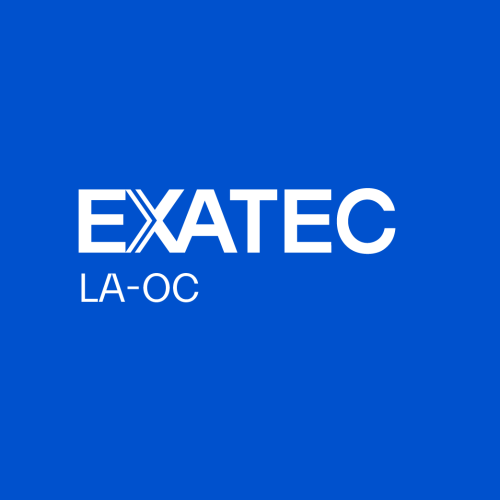EXATEC Arizona

Board Members
Description
Creada en 2004, su principal propósito es crear networking con los EXATEC que residen en la zona.
Creada en 2004, su principal propósito es crear networking con los EXATEC que residen en la zona.
Association created in 2008. Our objectives are:
• To unify and collaborate: we organize activities that help EXATEC get to know each other, make friends, and learn from each other.
• To make a difference: be agents of change in our environment and promote enriching activities for our members, their families, and communities.
• Cultural development: preserve and promote Mexican traditions through activities that enrich our members with dance, music, and art.
Asociación creada en 2008.
Nuestros objetivos son:
Unificar y Colaborar
Organizar actividades que ayuden a los EXATEC a conocerse, hacer amigos y aprender unos de otros.
Hacer la diferencia
Ser agentes de cambio en nuestro entorno y fomentar actividades enriquecedoras para nuestros miembros, sus familias y comunidades.
Desarrollo cultural
Preservar y promover las tradiciones mexicanas mediante la promoción de actividades que enriquecen a nuestros miembros a través de la danza, la música y el arte.
Nuestro propósito es promover el desarrollo profesional de los egresados de la región.
Asociación creada en 2017 con el objetivo de promover el desarrollo profesional de los egresados de la región.
Nuestro propósito es promover el desarrollo profesional de los egresados.
Fundado en 2018.
Somos mamás EXATEC, creemos en el poder de la mujer para transformar la sociedad, apasionadas por nuestras familias y profesión, hoy hacemos comunidad para ser agentes de cambio en el mundo.
Creado en 2017.
Buscamos promover el desarrollo personal y profesional de los egresados.
Fundado en 2013.
This multidisciplinary research group develops new materials, tooling, and manufacturing processes to trigger new design concepts and potential new products. The group performs modeling, synthesis, and characterization of nanostructured materials.
Advanced processes of interest include additive manufacturing (3D printing), subtractive manufacturing (industrial laser and micro-milling), and forming. Potential research applications include medical devices, transportation, energy, and construction.
Research lines
• Competitive intelligence, technological innovation processes, and product life cycle.
• Synthesis and manufacture of nanoparticles, nanostructures, and nano-reinforced materials.
• Modeling of nanostructures and multiscale manufacturing using computational calculation tools, quantum chemistry and mechanics, molecular dynamics, density functional theory, finite element, and computational fluid dynamics, among others.
• Mechanical (fracture, fatigue, corrosion, tribology) and structural characterization of advanced materials.
Leader
Ciro Angel Rodríguez González - ciro.rodriguez@tec.mx
Co-leader
Andrea Guevara Morales - a.guevaram@tec.mx
Members
Alán Joel Miralrio Pineda
Alfonso Gómez Espinosa
Anatoly Markov
Andrés Antonio Torres Acosta
César David Reséndiz Calderón
David Carlos Romero Díaz
David Güemes Castorena
David Isaac Ibarra Zarate
Eduardo Alejandro Flores Villalba
Elisa Virginia Vázquez Lepe
Erika García López
Horacio Vieyra Ruíz
José Antonio Otero Hernández
José Israel Martínez López
Juan Manuel E. Ramírez de Arellano Niño Rincón
Leonardo Israel Farfán Cabrera
Marisela Rodríguez Salvador
Moisés Jiménez Martínez
Omar Eduardo López Botello
Rafael Batres Prieto
Ulises Figueroa López
• Chavarría-Barrientos, D., Batres, R., Wright, P. K., & Molina, A. (2018). A methodology to create a sensing, smart and sustainable manufacturing enterprise. International Journal of Production Research, 56(1-2), 584-603. doi:10.1080/00207543.2017.1386333
• Cuan-Urquizo, E., Barocio, E., Tejada-Ortigoza, V., Pipes, R. B., Rodriguez, C. A., & Roman-Flores, A. (2019). Characterization of the mechanical properties of FFF structures and materials: A review on the experimental, computational and theoretical approaches. Materials, 16(6) doi:10.3390/ma12060895
• Farfan-Cabrera, L. I. (2019). Tribology of electric vehicles: A review of critical components, current state and future improvement trends. Tribology International, 138, 473-486. doi:10.1016/j.triboint.2019.06.029
• García-López, E., Olvera-Trejo, D., & Velásquez-García, L. F. (2017). 3D printed multiplexed electrospinning sources for large-scale production of aligned nanofiber mats with small diameter spread. Nanotechnology, 28(42) doi:10.1088/1361-6528/aa86cc
• González-García, J., Gómez-Espinosa, A., Cuan-Urquizo, E., García-Valdovinos, L. G., Salgado-Jiménez, T., & Escobedo Cabello, J. A. (2020). Autonomous underwater vehicles: Localization, navigation, and communication for collaborative missions. Applied Sciences (Switzerland), 10(4) doi:10.3390/app10041256
• Jimenez-Martinez, M., & Alfaro-Ponce, M. (2019). Fatigue damage effect approach by artificial neural network. International Journal of Fatigue, 124, 42-47. doi:10.1016/j.ijfatigue.2019.02.043
• Lopez-Botello, O., Martinez-Hernandez, U., Ramírez, J., Pinna, C., & Mumtaz, K. (2017). Two-dimensional simulation of grain structure growth within selective laser melted AA-2024. Materials and Design, 113, 369-376. doi:10.1016/j.matdes.2016.10.031
• Miralrio, A., & Vázquez, A. E. (2020). Plant extracts as green corrosion inhibitors for different metal surfaces and corrosive media: A review. Processes, 8(8) doi:10.3390/PR8080942
• Mittal, S., Khan, M. A., Romero, D., & Wuest, T. (2018). A critical review of smart manufacturing & industry 4.0 maturity models: Implications for small and medium-sized enterprises (SMEs). Journal of Manufacturing Systems, 49, 194-214. doi:10.1016/j.jmsy.2018.10.005
• Rodríguez-Salvador, M., Rio-Belver, R. M., & Garechana-Anacabe, G. (2017). Scientometric and patentometric analyses to determine the knowledge landscape in innovative technologies: The case of 3D bioprinting. PLoS ONE, 12(6) doi:10.1371/journal.pone.0180375
• Navistar
• BASF
• Siemens
• ABB
• Festo






